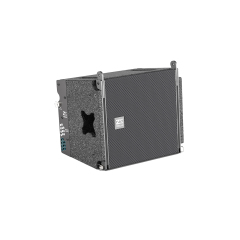Designing an efficient sound system for the stage takes time and attention to detail because one has to hear every single note well. In which case the first step is to choose some equipment, based on room size and event type. For example, to fill a 500-seat theater with undistorted sound typically requires a power output of at least 5,000 watts.
Line array speakers: These create a gentle projection of sound over long distances, making them favourites for live concerts. Multiple speaker units stacked vertically produce relatively even sound distribution. For concerts or even large events, you cannot go wrong with JBL VTX series that offers clarity and coverage.
Selecting the right microphone affects audio quality as well. Industry standards, such as the Shure SM58 dynamic microphone are built to last and capable of high SPL. Wireless microphone systems provide exemplary freedom and mobility for larger venues that allow dramatists to move throughout large areas on stage, unconfined from a fixed location. For example, the Shure ULX-D wireless system can transmit 330 feet or even longer distances without experiencing any dropouts thereby guaranteeing you a confident performance in larger rooms.
An engineering with works must also consider the acoustics of an environment. In rooms that sound bad an acoustic treatment, such as some type of absorbing panels will control echo and overall the room acoustics. The Apollo Theater in Harlem, another example of historic live venue with very few options for changing the architectural features which create those problems has pursued acoustic treatment over years of design and testing to save their acoustical reputation.

Equalization is also a key step in setting up the stage sound system, since it helps balance - and prevents drowning out of different frequencies. Equalizers, like the Behringer Ultragraph Pro, let engineers control what frequencies are being turned up in volume so that bass midrange and treble come out clearly. Feedback is when sound that comes out of the speaker goes back into the mic.
For spaces bigger in size the delay speakers should be placed so that sound from it is reached at back side same time when its reach heard front. Allied to the technique used in stadiums and large theaters of placing extra speakers at key points around a venue, The sound from them is in sync with the main speakers, so you always get good audio experience every where across.
Last but not the least Performer every acting call needs to be monitored. Floor wedges or in-ear systems (it's 2018, people) are stage monitors that provide live audio for performers to hear themselves. Having personal mixes directed at the performer through in-ear monitors, such as a Sennheiser EW IEM G4 has become is also gaining traction because it can reduce feedback risks and make sound monitoring possible for everyone.
For further information about stage sound system you can visit Stage Sound System Guide.